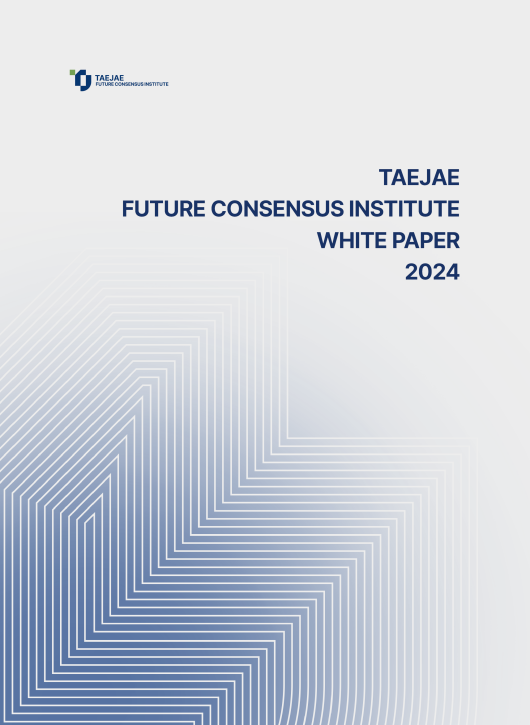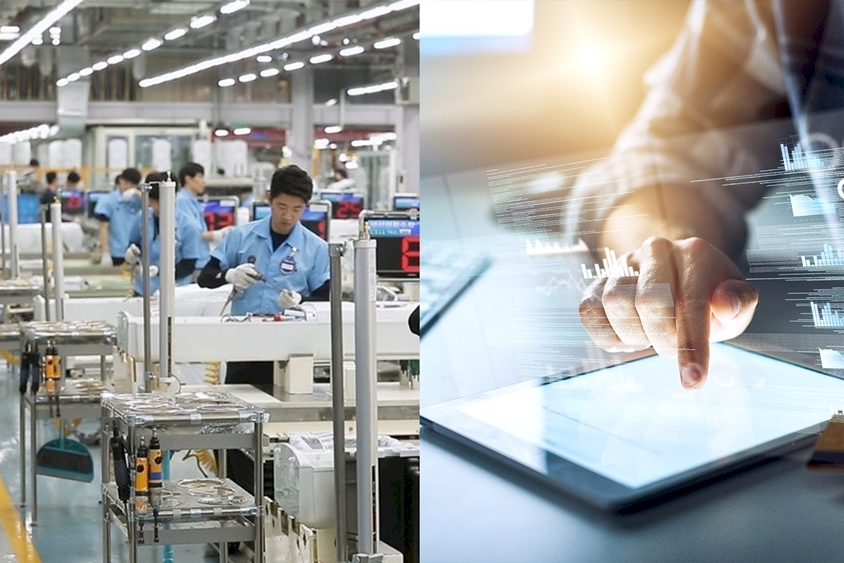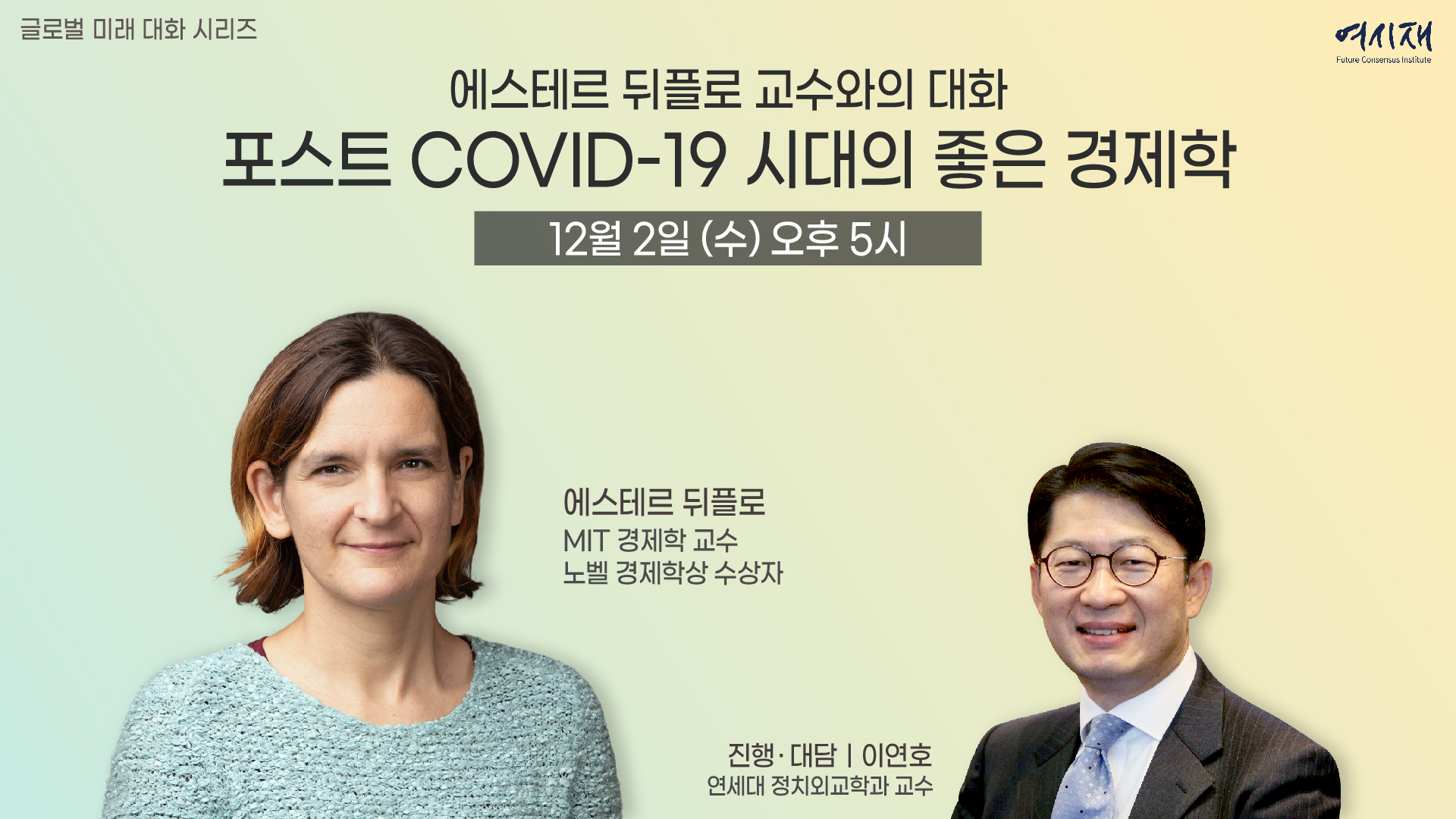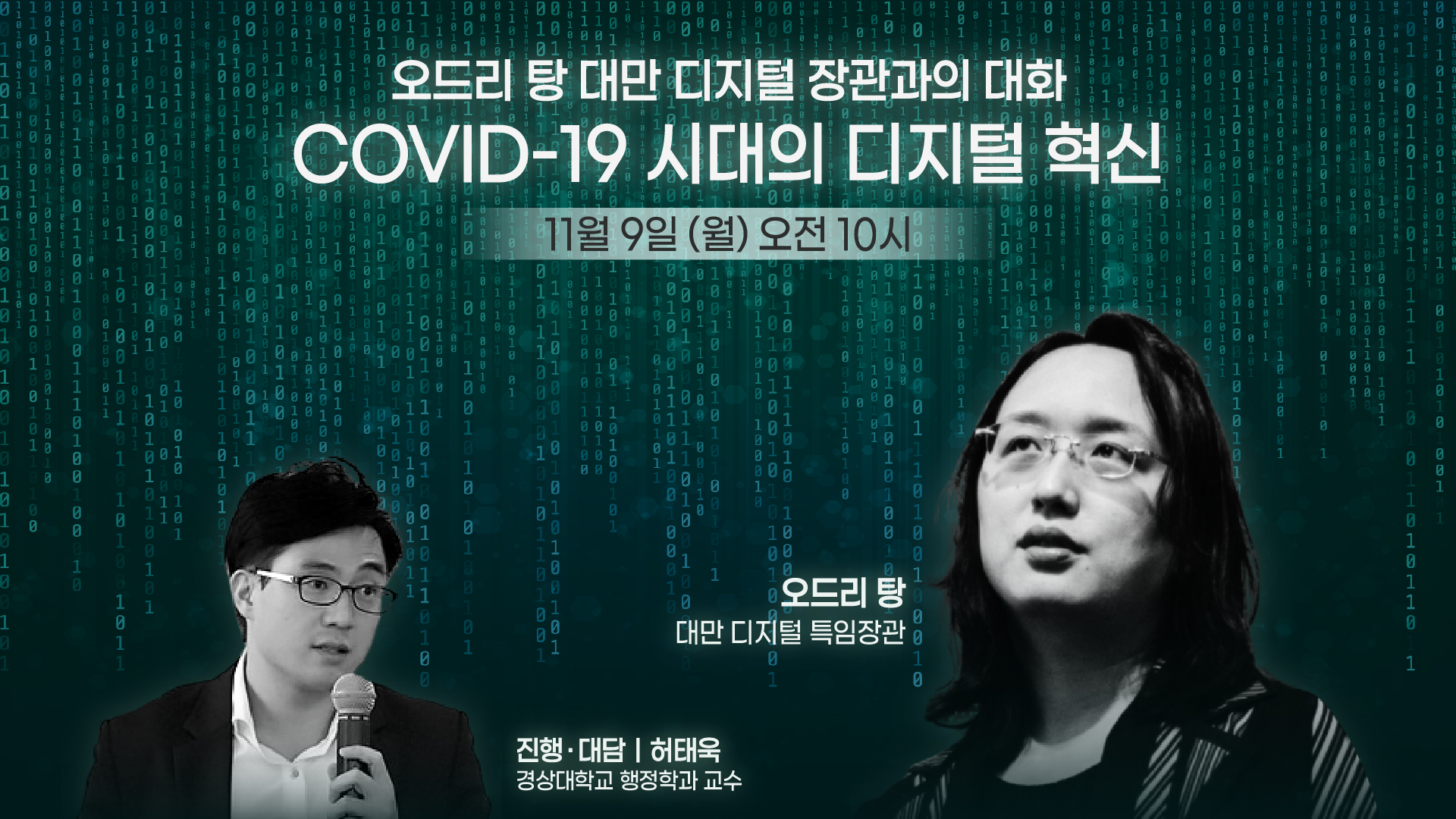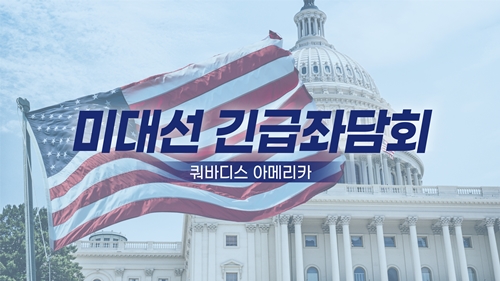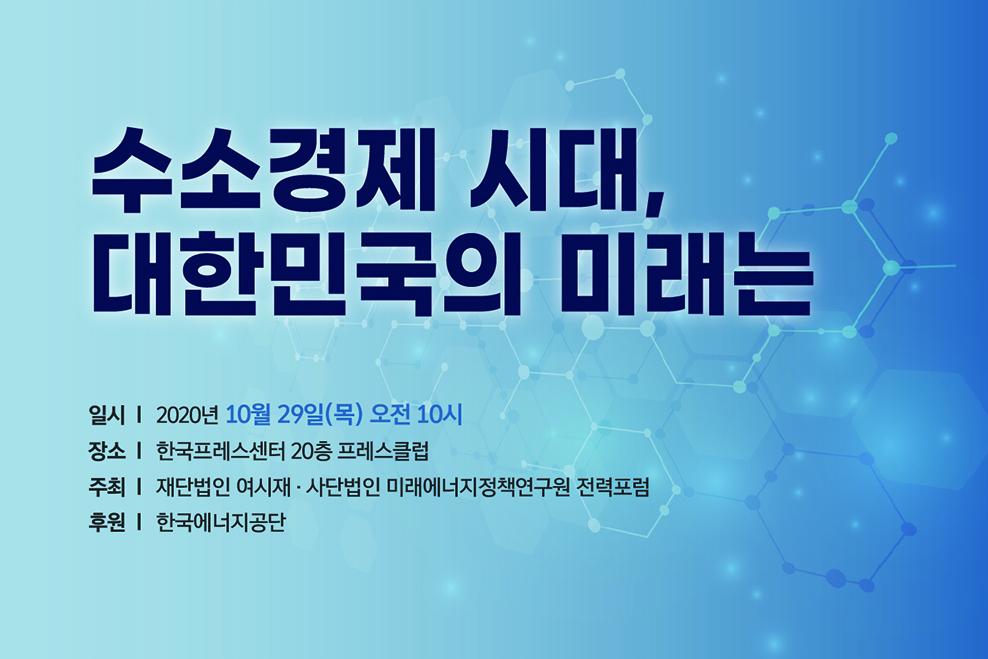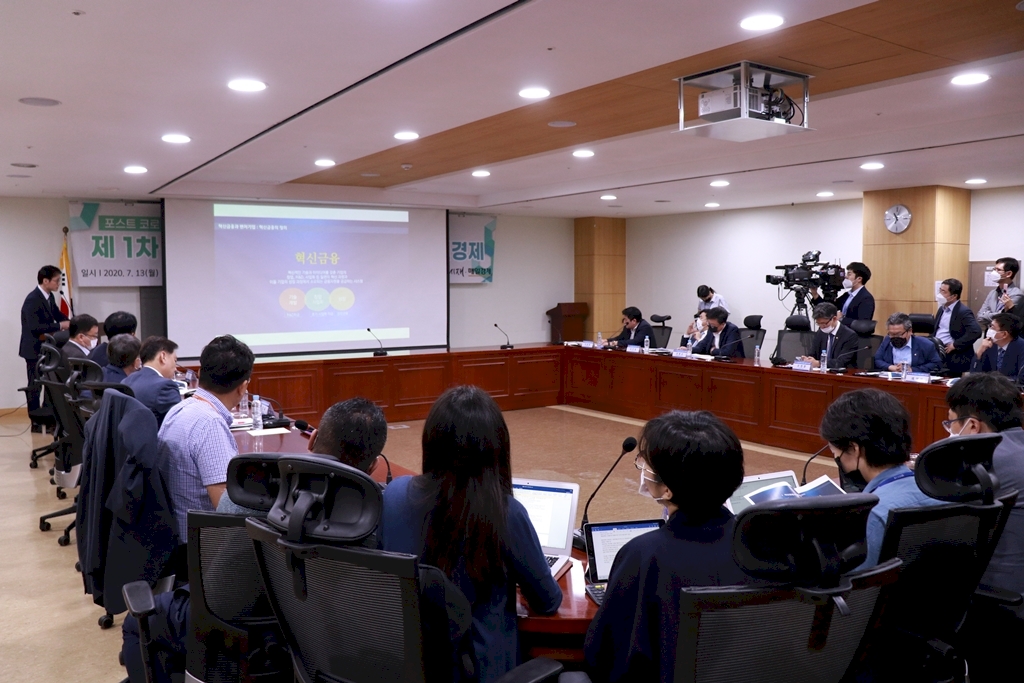Please join Yeosijae as we build a brighter future for Korea. Create your account to participate various events organized by Yeosijae.
- Insights
- |
- Next-Generation Values
[Yeosijae Now] [Post-COVID-19 Panel Discussion ③] Global health care regime and the future of bioscience
“From Responding to COVID-19 to Preparing for COVID-20”
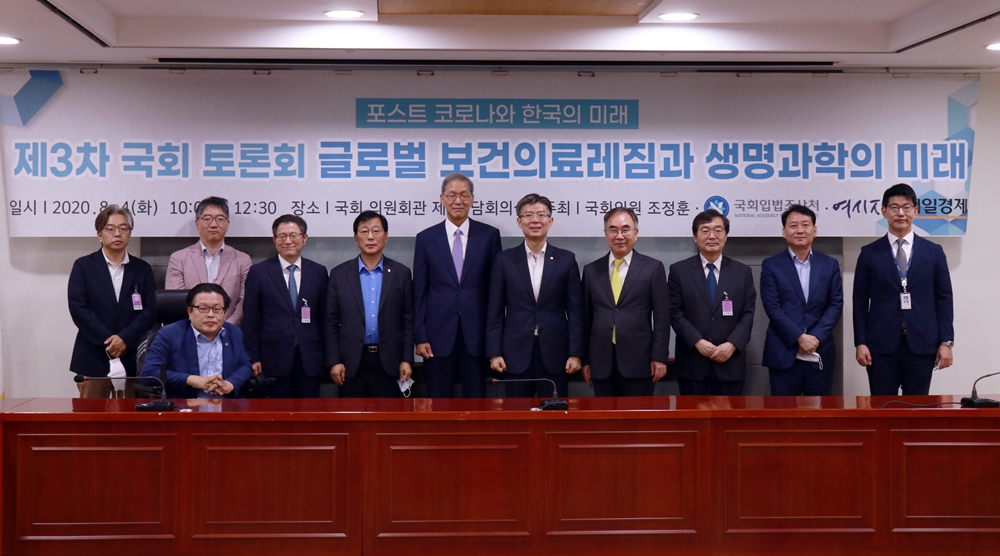
“A great reset is necessary to build a new social contract that honors the dignity of every human being.” - Klaus Schwab.
On July 13th, the Chairman of the World Economic Forum, Klaus Schwab, drew attention to the uncertainties of the pandemic age through his book titled “The Great Reset of COVID-19.” As the book’s title suggests, the world is now at a crossroads, not just in the realm of health and economy, but also in political systems and philosophies on life.
The Future Consensus Institute (Yeosijae) formed the COVID-19 Committee at the end of February, ahead of the World Health Organization’s pandemic declaration on March 11th, to hold internal seminars on various aspects of the virus. To share the results of these seminars and to expand the discussion, we decided to hold a series of panel discussions on COVID-19 and the future of South Korea. The first session was held on July 13th to discuss the digital transformation and innovation economy, followed by the second session on 28th on the chaotic world order and global leadership and the last session on August 4th at the National Assembly Members’ Hall.
This session was held under the main topic of “the global health care regime and the future of bioscience”, featuring presentations from Legislative Investigator Seong-Hoon Gwon (National Assembly Research Service) and Professor Baik-Lin Seong (Director of the Center for Vaccine Commercialization Technology Development). The panelists for the debate were: Sang-Sun Yoon (Professor of Microbiology, Yonsei University), Sang-Cheol Shin (CEO of Eone-Diagnomics Genome Center), and Dong-Woo Lee (Professor of Biotechnology, Yonsei University). The session was chaired by Jung-Hun Cho (Member of the National Assembly, Transition Korea), with opening remarks by Ha-Joong Kim (Chief of NARS) and welcoming remarks by Doh-Yeon Kim (Director of Yeosijae and former President of POSTECH).
The event was hosted by Yeosijae, NARS, Maeil Business News Korea, and the Office of Lee Kwang-Jae and was attended by Rep. Eun-Hye Kim (United Future Party).
|
[Yeosijae ‘Post-COVID-19 Committee’]
|
The following highlights the key points of the event:
[Presentation 1] Innovating the National R&D System / Seong-Hoon Gwon (Legislative Investigator, NARS)
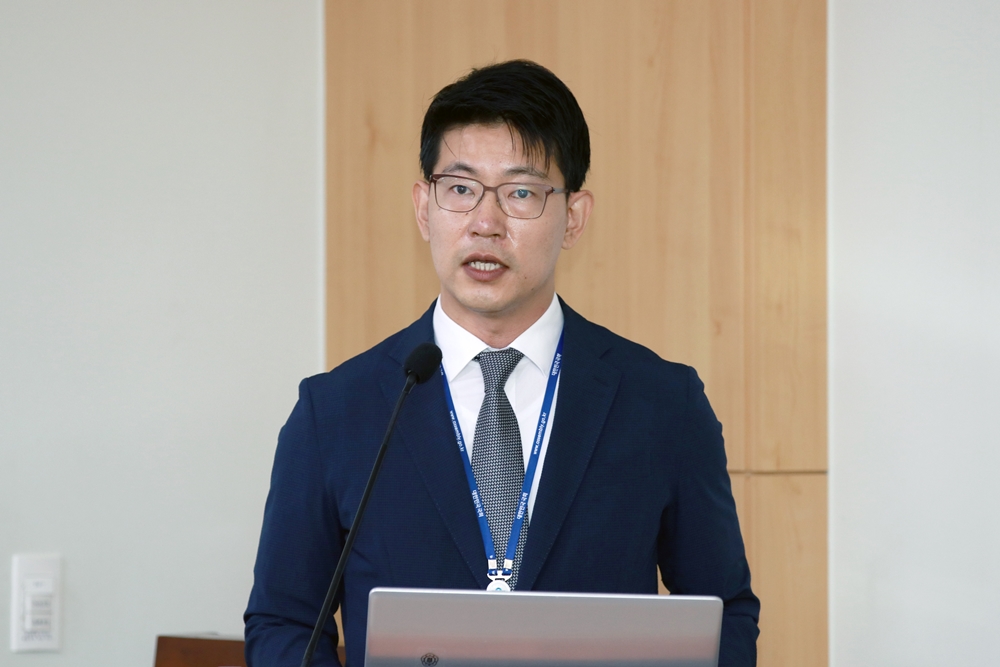
“Funding is not an issue for our national R&D programs. Innovation is.”
We are in unparalleled times, facing a series of unprecedented risks, including Japan’s export restrictions and the COVID-19 pandemic. Hopes are high for the role of science and technology in surmounting the challenges that we face in these times of national emergencies.
South Korea’s investments in research and development have increased sharply over the years. Original plans for the R&D budget targeted a yearly increase of roughly 5%, or 1 trillion won, but with Japan’s export controls, the bars have increased to a 10% increase per year. As a result, this year’s R&D budget will amount to 24 trillion won, with funds for next year expected to reach 26 trillion won.
“South Korea has a competitive science and technology innovation capacity.”
South Korea’s science and technology innovation capacity is higher than it is generally perceived. In fact, South Korea topped the European innovation scoreboard for eight consecutive years and ranked second in the innovation performance growth rate, behind China. Of course, there are areas where South Korea is showing a low performance, but in general, South Korea would rank at 5th (or at the very least, 7th place) in the overall global innovation performance index.
What do domestic indicators show? According to a survey of researchers in Korea, the majority of respondents felt satisfied with the scale of R&D funding, but found weaknesses in the management and distribution of the funds and cooperation between government bodies and public organizations. The overall assessment was that while we are on the right track in our science and technology development, we should endeavor to meet or exceed the expectations.
“R&D projects take time to show results.”
R&D projects take time to bear fruit. The results are not immediately apparent, and difficulties arise afterward in determining the level of contributions of individual technologies. Moreover, R&D achievements undergo commercialization to make marketable products and services, even in unintended areas of application.
One of the main goals and purposes of R&D is for researchers to accumulate knowledge. This unique characteristic of R&D often creates a gap between the perceived and actual application of acquired knowledge.
This is where a problem occurs. Delayed results and evaluation challenges of R&D sometimes push science and technology to the back of the government agenda. In other words, the distinct features of R&D give rise to problems when conventional methods are used to allocate authority and budget for the science and technology field.
“We need a control tower in the science and technology sector.”
Numerous research institutions and agencies carry out R&D activities, and this creates the demand for a control tower to provide oversight. Currently, the Office of Science and Technology Innovation (OSTI) under the Ministry of Science and ICT is fulfilling this role. The organization was established in 2004 for comprehensive management of science and technology policies, and many reforms have occurred since. I believe there is a need to elevate the OSTI to presidential or prime ministerial level. A similar government body in the U.S. is under the White House, as the Office of Science and Technology Policy (OSTP). Japan had already established a council on science and technology under the Cabinet Office, but recently passed a legislation to establish a new organization in April 2021 to support the other.
“The government should consider combining the legislations
to manage the institutions under a single comprehensive law.”
Currently, there are four institutes of science and technology in Korea, each with its own legislation on its establishment and operation. Because they fulfill similar roles, many components of their laws are the same. Considering that national emergencies call for cooperation between these organizations, the government should consider combining the legislations to manage the institutions under a single comprehensive law.
I believe there are three priorities in developing R&D policies that we must emphasize. First, we must provide support for private investment that has been discouraged by the national crisis to encourage private investments in R&D. Currently, the Korean government re-collects a part of the R&D funds (40% for large corporations and 10% for SMEs) as government technology fees. The government should either amend the legislation to eliminate these costs or use a comprehensive management system to reinvest the sum in research institutes. Second, the Korean government should foster an R&D environment that encourages bold research and development initiatives, and lastly, establish a system that accelerates the growth of science and technology innovation capacity. With the majority of public funds currently allocated to present-focused areas instead of future-oriented projects, improvements can especially be made in the last area by changing how we manage government funds. Without a doubt, there are rooms for improvement.
[Presentation 2] Global health care governance / Baik-Lin Seong (Director of the Center for Vaccine Commercialization Technology Development)

“It is impossible to know when MERS 2.0 will appear.”
Vaccines play a key role in public health care. However, due to the limited size of the market, pharmaceutical companies face difficulties when vaccines eradicate diseases. Clinical trials also require a sizable amount of investment. These factors create high barriers to entry and limit market competition by allowing a handful of companies to seize more than 80% of the market share.
Ensuring the safety and effectiveness of vaccines are the two most important factors of vaccine development. Of the two, vaccine safety is more prioritized because, unlike treatments for sick patients, vaccines are used on the healthy population, and if just one person, out of a million vaccinated population, were to die from the vaccine, the news would make headlines. Many pharmaceutical companies have gone bankrupt from litigation over such issues. Moreover, it is impossible to tell how long the COVID-19 vaccine market will last, creating a dilemma where the general public wants to see the end of the virus as quickly as possible, while for-profit corporations would prefer that the market lasts longer.
Generally, when viruses become less potent, they are likely to become more infectious. If we apply this logic as it is, there is no way to determine whether and when the Middle East Respiratory Syndrome (MERS) virus from five years ago will return as MERS-CoV-2. Thus, we must prepare for the possible emergence of another variant of the current SARS-CoV-2.
“Controversies could arise when vaccines are developed in a year or two.”
The COVID-19 vaccine adds another factor to the equation—swiftness. Because vaccine development and deployment should be faster than the spread of the virus, pharmaceutical companies have to shorten the development process from ten to fifteen years to just one or two years. Consequently, there is a shift occurring in our vaccine paradigms.
Against this backdrop, South Korea’s Ministry of Food and Drug Safety placed priority on the safety of vaccines to shorten development time, though they also assess vaccine efficacy. DNA vaccines are regarded as the safest vaccines. However, it is important to note that due to the low efficacy of DNA vaccines, they are yet to be commercialized though they were introduced 27 years ago. Though DNA vaccines are leading the discussion on safe vaccines, its limitations could prove to be a problem in a year or two, when clinical trial results start to accumulate.
The characteristics of the virus raise another question of safety. In other words, vaccinations could lead to increased infection rates, as it did with Severe Acute Respiratory Syndrome (SARS). Had we completely eradicated the SARS-CoV, we could have had swifter responses to the current pandemic. However, we chose to sweep everything under the carpet without providing scientific solutions to the issue. As a result, we will have to face the same challenges again when vaccines are developed in a year or two.
“We should build a ‘vaccine library’ in advance.”
Roughly two to three years ago, the World Health Organization (WHO) developed the “Blueprint List of Priority Diseases” to name diseases with the potential to cause a global health care emergency in the next few decades. There is a placeholder on the list to refer to viruses that are yet to appear, called “Disease X.” I believe that “MERS-CoV-2” will become one of the next “Disease X.” Sadly, we have yet to make any preparations for this threat. We must establish measures to prepare for future pandemics, including a “vaccine library” to compile data on potential vaccines for possible future threats.
Lastly, I would like to address the topic of universal vaccines. Universal vaccines refer to vaccines that are effective against all strains of viruses, eliminating the need to create new vaccines when variants appear. The influenza is bound to return this winter. In this context, we must search for ways to develop general-purpose vaccines that can fight both COVID-19 and the influenza viruses, and are effective against the next “Disease X.” We could experience a shift in the paradigm of vaccines in the next ten or twenty years.
South Korea’s plans for the future include an agenda on universal vaccines. In this regard, I believe that we are making progress in the right direction, and success in these areas will expand “K-disease responses” to promote “K-Bio” in the world.
[Debate 1] Sang-Sun Yoon (Professor of Microbiology, Yonsei University)
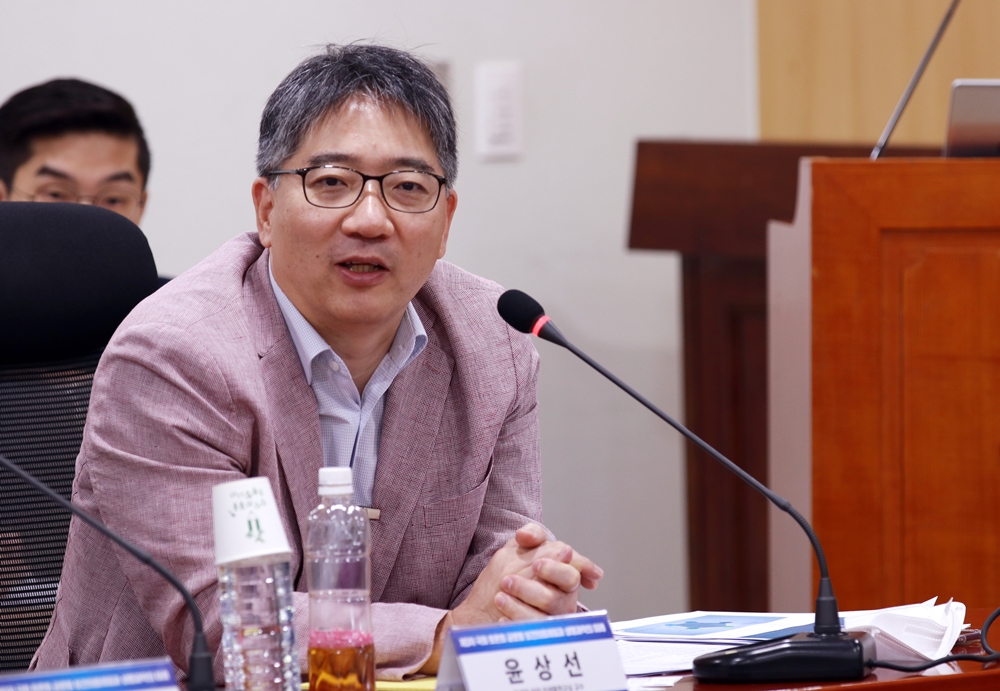
“We have not made any progress on the proposals from four years ago
to strengthen the UN and WHO.”
The global infection rate remains high, and I find this situation very concerning. The WHO declared COVID-19 as a pandemic on March 11th. The virus has lived up to this title, spreading rapidly throughout the world. In a fatal tweet in the early stages of the coronavirus, the WHO made a critical mistake by claiming that “there is no clear evidence of human-to-human transmission of the novel coronavirus”. Since then, the WHO has provided many guidelines for others to follow, but regrettably, they are – as their names suggest – non-mandatory “guidelines.”
There is a paper that was published in 2016, after the Ebola epidemic was brought under control. It reported findings from four independent studies and called on the United Nations to take center stage. It also offered measures to strengthen the WHO. However, no follow-up measures were taken, and the world was caught unprepared when COVID-19 struck.
South Korea has had great success curbing the spread of the coronavirus. The U.S. Centers for Disease Control and Prevention’s article on South Korea’s responses testifies to the effects of our rigorous “contact tracing.” Last week, Yeosijae hosted a joint symposium with the Society of Security and Diplomatic Policy Studies (SSDP) to discuss COVID-19 responses and the challenges of the post-COVID-19 world. Professor Takashi Sekiyama from Kyoto University highlighted the power of contact tracing by providing detailed, statistical comparison of countries that chose to focus on contact tracing against those that prioritized lockdowns and travel bans.
Currently, the profit-driven private sector leads the efforts to develop vaccines and treatments. However, once vaccines are developed, we will need some form of international cooperation system to ensure the stable distribution of vaccines to all corners of the world. Some of the main functions of WHO have disappointed us in this time of COVID-19. In this context, I believe that we need an efficient governance system that provides more support for research, such as those on vaccines and treatments, instead of the conventional system that prioritizes assistance for R&D management.
[Debate 2] Sang-Cheol Shin (CEO of Eone-Diagnomics Genome Center)
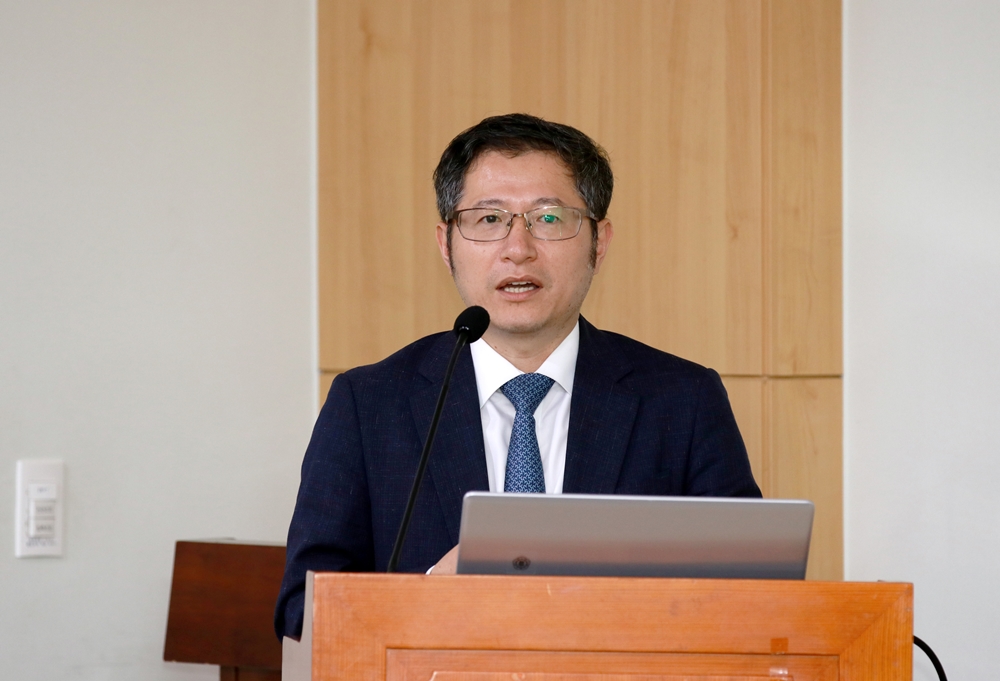
“COVID-19 will not disappear on its own.”
The Eone-Diagnomics Genome Center analyzes up to 2,000 cases daily to determine if patients are infected with the novel coronavirus. Against this backdrop, my argument today will be based on our own experience at the EDGC.
There is a reason why the novel coronavirus has been named COVID-19. It presupposes that another virus, a COVID-20, could appear in the future. As of July 17th, we have over 13.65 million confirmed patients globally. A third of the global population has to be infected to stop the spread of the virus. However, the novel coronavirus is an elusive virus. It will not be easy to bring the pandemic under control. The virus will become entrenched in our bodies and society to “coexist” with humans.
Our habits and hobbies will change. The number of zoonotic diseases will increase. Melting arctic glaciers present the risk of unleashing ancient viruses that have been trapped in ice for centuries. Diagnostics, disease management, and treatment will become major global markets. Facing these changes, South Korea will have to grow new industries to take on a global leadership role in the future.
“Developing a vaccine is easier said than done.”
Though the novel coronavirus has a relatively low fatality rate, it spreads incredibly fast. That is why we must start considering our responses to the potential outbreak of “COVID-20”. The war against this virus is far from over, and developing vaccines and treatments are easier said than done.
Health care systems differ among countries. Europe, for instance, has a relatively large proportion of public health care services, roughly 40 percent of the total, while it is less than 10 percent for South Korea. However, the crucial factor of epidemic responses is whether the health system has the resilience to avoid a collapse. For example, private hospitals in South Korea treat about 100 patients per day as a result of the small proportion of public health care services. In regions like the U.S. and Europe, private hospitals offer services to about ten to twenty patients per day. This is why the spikes in the number of patients, from early tens to hundreds, collapsed the health care systems of countries like the U.S., the U.K., France, and Italy. Consequently, nothing is more important today than acquiring the capacity for hospitals and healthcare workers to withstand pandemics.
From my experience working in the field, I believe that in circumstances without vaccines and treatments, early diagnosis and quarantine are the most important actions that we can take. Consequently, we must develop quick, decisive response systems and share our information related to infection and health care services by building an integrated database. These efforts will push our epidemic responses towards non-contact controls conducted throughout our daily lives.
China leveraged digital technology to adapt a totalitarian model of epidemic responses. South Korea kept its borders and businesses open, defended the rights to freedom, and became an exemplary digital democratic state to suppress the spread of the virus. I believe that we have taken a step in the right direction, and if we continue down this road, South Korea could emerge as a global leader. We must take advantage of our diagnostic and medical technologies, market openness, and democracy to seize this opportunity and lead the world.
[Debate 3] Dong-Woo Lee (Professor of Biotechnology, Yonsei University)
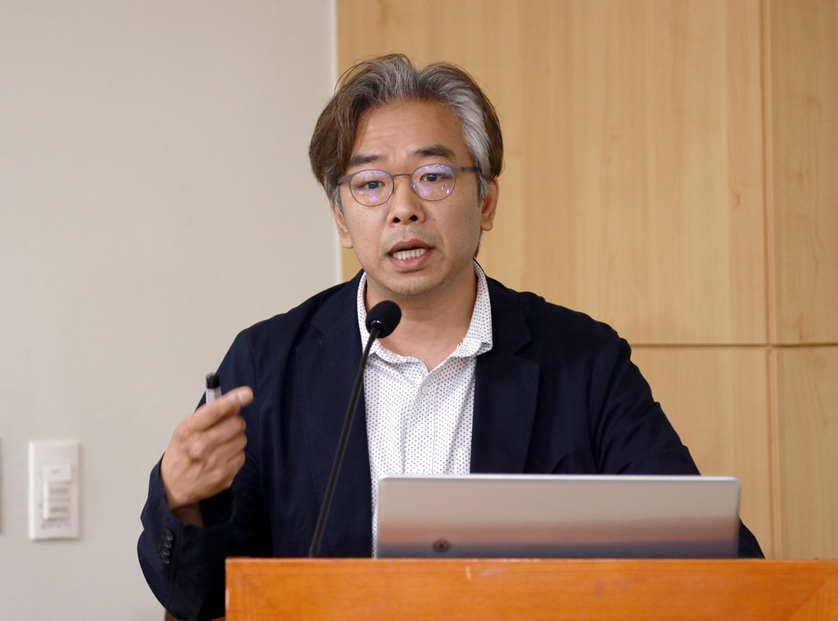
“The debate on the environment did not appear out of thin air.”
Biological sciences were given a spotlight in the early 2000s when cancer became a burning issue. This was followed by a growing interest in metabolic diseases and, simultaneously, the emergence of bio-energy and stem cells. Now, all of our attention is on the pandemic. With each of these trends came drastic changes in the direction of our R&D policies.
I would like to, first, take a step back and discuss the question of what brought on the pandemic. The debate on the environment did not appear out of thin air. We must invest more of our attention to the root causes of the problems and consider the best approaches to environmental protection. There is no doubt that much of our actions over the past century have been human-centered activities. Though we were able to achieve prosperity as a result, much of our natural environment was left devastated by these actions. In fact, air quality levels improved after human activities were reduced due to the pandemic.
“We are losing biodiversity.”
What do all these facts mean? All of this may sound familiar, but one thing to point out is that today, there are actual, tangible signs of human extinction. Biodiversity is on the decline, and the expansion of inhabitable land is driving up population density. Though there are discussions on urban population density and balanced regional development in South Korea, from a broader perspective, this is a global trend that will severely affect our future generations by 2050. The warning signs are there, but we continue to overlook them.
“The U.S. government started its preparations for the bio-economy thirty years ago.”
This is why I believe that bioscience research and development projects must set philosophies and directions before project execution. For example, advanced nations in the West begun their preparations for the “bio-economy” thirty years ago. They shifted the focus of their R&D projects from chemical- to bio-industry, and made great sums of investments. In this context, I would like to argue against R&D investments focused solely on the pandemic. Ultimately, we need to set our sights for R&D projects that will create a happy, sustainable, healthy world.
There is an institution in Maryland that is capable of decoding the DNA of living organisms— the National Center for Biotechnology Information (NCBI). It became one of the institutions to participate in the Human Genome Project when the initiative was conceived and launched in the 1990s. The South Korean government must consider why the U.S. government started this project three decades ago and make reflections on what we were doing during this time. The NCBI now provides solutions to various challenges, having made dramatic developments in its sequencing technology over the years. The Obama administration formally launched the Human Microbiome Project (HMP) after the completion of the HGP, recognizing the importance of microorganisms, gastrointestinal microbiota, and viruses on human health. However, we must note that the plans for this initiative were made two decades ago. Contrastingly, South Korea is yet to launch any microbiome projects. The clock is ticking and time is running out.
The “singularity” or when AI surpasses human intelligence, is set to arrive by 2025. Healthcare and education will become important areas of application. The abilities to predict and prevent future threats are critical in such times, but is South Korea equipped with these skills? This, I believe, is a question worth giving some thought about.
This text was originally published on Yeosijae’s Korean homepage on August 6th, 2020.
< Copyright holder © TAEJAE FUTURE CONSENSUS INSTITUTE, Not available for redistribution >

